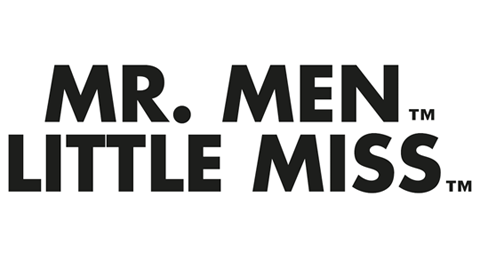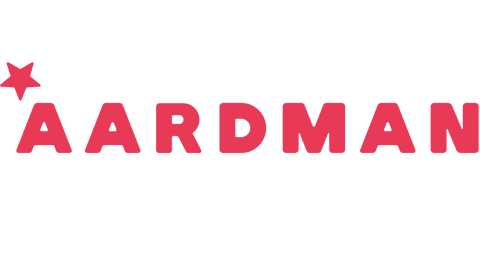There’s no question that the pandemic had a huge and still reverberating impact on the country’s cultural and heritage sector, forcing shut the doors of establishments across the UK, and applying a financial squeeze on an industry largely dependent on footfall and wallets of the nation’s leisure and tourism market.
According to the latest research from Art Fund – having drawn together some 400 responses from museum directors and museum professionals, the most pressing concern for almost all organisations across the country is safe reopening and attracting audiences back. In fact, 85 per cent of directors have expressed concern over the ability to attract visitors upon the continued easing of restrictions.
Among the many to be hit by the pandemic was London’s Cartoon Museum, an institution that shares strong ties not only with the cultural and heritage sector, but the licensing space, too – housing some of the most iconic comics and cartoons to have populated popular culture of the modern era.
Last year, the museum found itself the focus of a fundraising campaign to help keep its doors open – when doors were allowed to reopen, of course – that had ignited the passions of the comic book and cartoon fan communities across the country. The museum is now happy to report that those doors have firmly swung back open, and the museum is already welcoming back visitors from schools and pre-booked groups looking to get their cultural fix this year.
But from the pandemic, suggests the team, a new era for museums, and the cultural and heritage sector overall, could be arising, as organisations are forced to look towards local communities and audiences and less on the tourist trade.
Here, Licensing.biz continues its look into the heritage sector and catches up with The Cartoon Museum’s Director, Joe Sullivan, to uncover the museum’s learnings through Covid-19 and what the future role of the museum could like in a post-pandemic world.
Hello Joe, it’s good to catch up with you again, and under happier circumstances with the museum now reopened! What has reopening the museum been like for you? What has reaction been like from visitors and public?
It has been wonderful to finally reopen to the public after another enforced lengthy closure during the Winter. During the downtime we worked hard on enhancing the museum to make it even better for our visitors – painting floors and walls, boxing noisy pipes off, hanging comic art in our learning space, revitalizing the shop, and putting up two new exhibitions. Visitors have enjoyed coming back to the site over the past month, with half term particularly busy, and it has been great to chat with people about cartoons again in person.
A really encouraging thing for us is that we have had a lot of first-time visitors. We hope that this continues as we bed into our new home properly (we still haven’t had a complete year open at the new site), and as people start to feel more comfortable leaving the house. Reopening has also been tinged with sadness however – we lost our Front of House Manager, Alison Brown, to COVID-19 in January. She was the heart and soul of the museum for 14 years and we all miss her terribly.
Can you talk us through some of the latest developments for the museum? You’ve mentioned some new exhibitions – can you talk us through these and what reception has been like so far?
The two new exhibitions have been received fantastically, and I feel like our visitors can see the direction of travel we are taking and are enthused by it. By taking a larger theme – such as protest in the case of V for Vendetta: Behind the Mask – we can connect with visitors in a more personal way.
The V exhibition not only displays incredible high-quality original art and rarely-seen film designs, it also encourages visitors to reflect on the world of V, how it relates to the world now, and what a subject like protest means to them individually.
We are very lucky with V as David Lloyd, the artist, is a close friend of the museum (he very kindly auctioned an original V page as a fundraising donation to our survival appeal last year). His support through the exhibition has been invaluable, allowing us to really dig into how V was made, and why certain design choices were made.
This focus on people stories and more universal themes crosses over to our In-Focus exhibition, Natasha Natarajan: FML Comics, a display of the work of British-Indian web cartoonist and animator Natasha Natarjan. The first two people through the door on the day we reopened were two older visitors who had travelled all the way from Scotland, one of whom went away grasping a copy of Natasha Natarajan’s FML Comics book. I was delighted to see this!
The book – which is linked to our current In-Focus display – is full of frank, funny, very personal cartoons about Natasha’s experience as a young millennial woman in modern London. The fact that people from a different demographic and part of the UK related so strongly to Natasha’s work really showed the strength of the stories and art we are sharing, and how it can connect to people’s experiences universally.
You’ve also mentioned the return to learning and engagement work with young people. What does this look like for the museum? What spurred the decision to return to this kind of work through the museum, and is this indicative of a new ‘post-pandemic’ role of museums and their position in the community?
Engagement work is my personal passion, and has been very high on the agenda since I came to the museum. The great thing about cartooning is it has a very easy ‘in’ – anyone can pick up a pencil, and our collection ranges from the finely engraved detail work of Hogarth to the comedic minimum-line doodles of Times cartoonist (and Museum founder) Mel Calman. The point this makes to me is that anyone can pick up a pencil and draw a cartoon.
Alongside restarting our cartooning workshops in an online form (we hope to return to physical workshops in the summer), we have spent the last few months building local partnerships in our local London borough, Westminster. Westminster has one of the highest indices of deprivation in London (the gap between richest and poorest areas) and it is essential that the museum serves and represents all of our local audiences.
We recently started a project with local youth centres called Life Under Lockdown, which works with local young people to draw comic strips telling their personal stories of their lockdown experiences. We will collect these for the future but will also compile them into a comic book to give to participants and libraries, and will hopefully display some of the work either on the museum site or on our website.
Our team attended a street festival during the May bank holiday, taking cartoon and drawing resources with them for local families to take part in, and we are currently planning a really exciting local offer for the summer.
So, the big question: What does running a museum post-pandemic look like today? How do you think the public’s method of engaging with heritage and history has changed over the course of the pandemic, and what are you guys doing to tap into the new ‘lay of the land’?
Running a museum right now is based on balancing hope against financial pragmatism! The reality is that it will be a slow road back for visitor numbers, especially as foreign tourism will be absent for a while longer, and it isn’t certain that there will not be further lockdowns.
It is important that we are careful with our spending as 70 per cent of our income is through the door, and we have no idea when fluctuations and growth on that front will happen. On the other side is the hope – we want to be open so people can come in, and we have to move forward hoping that all of the doom and gloom lifts!
During the pandemic a lot more audiences went online, and at the times where there haven’t been lockdowns, people are not travelling far to go on outings. We need to ensure local audiences can find us and enjoy themselves, and we need to keep our online offer in mind.
We have had good success with our free downloadable drawing resources and our online workshops have reached a wider audience than we have done in the past, so we will be keeping a part-online approach to our engagement work in the future.
What is the role of a museum in today’s culture?
I believe a museum should form the hub of its community, both in terms of topic (in our case cartoon and comic artists) and locality (for us Westminster, and London). For a long time museums have been unique in that they are considered a trusted source of information. The work by academics over the past few years that has led into the so-called ‘culture war’ have started to challenge that, both for good and bad, as questions are being asked of the truth presented and how truly representative they are of Western Europe in the 21st Century.
I personally think that museums need to continue to be upheld as arbiters of truth, but to do that they need to take that responsibility seriously and ensure they are fully representative of the people, audiences, objects and stories that they champion.
What’s the next big move for you guys? What does the future have in store for the Cartoon Museum?
Excitingly, we are currently pulling together our exhibitions programme for the second half of 2022, and getting ready to announce our next In-Focus exhibition that starts in August. We are also looking forward to getting schools and events back in the building!
With a slightly wider lens, we are beginning a period of collections work that will audit our current collection to understand exactly what we have, and the stories that it tells. This will feed into new collection policies that inform what we will collect and display, to ensure we can tell as full and representative a story of the cartoon art form in Britain as possible in the future.









